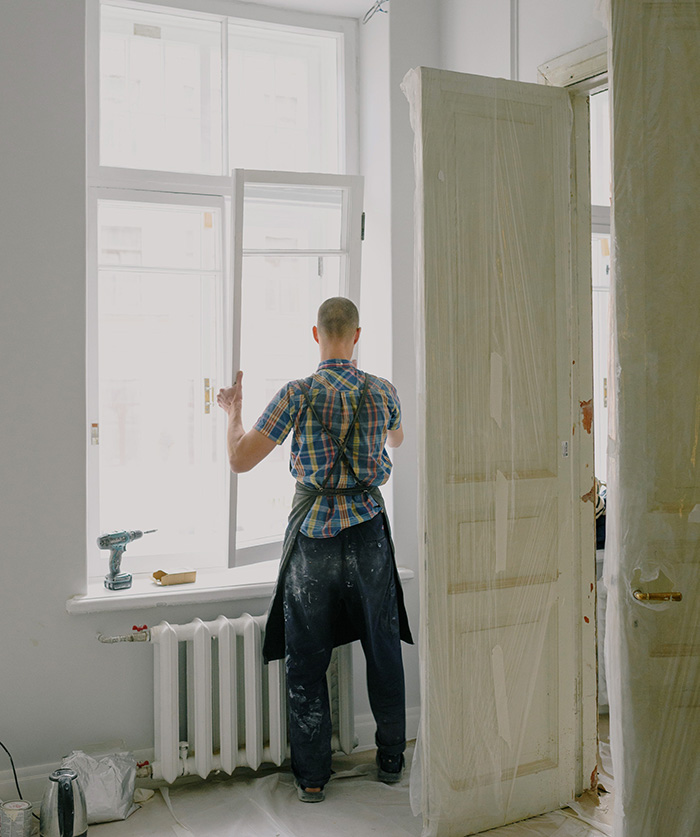 Create a Budget
Create a Budget
Once you have a sense of your target neighborhood and going prices for houses in it, it’s time to set up a house flipping budget. First, you need to know what you can reasonably pay for a new home.
Buying with all cash is the simplest route for home flippers. It cuts out the mortgage application and approval process, as well as makes your offer more attractive to sellers.
Plus, you won’t need to make ongoing interest payments for the property as the renovations are underway. Still, some house flippers need financing. According to ATTOM’s 2020 report, 40.5% of flipped homes were purchased using financing.
Once you nail down the amount you’ll need for the actual house, you should explore the costs of potential projects. Many people drop the ball here by failing to take the housing market into account.
For illustration only: if neighborhood prices top out at, say, $100,000, and you pay $50,000 for the house alone, a $35,000 kitchen upgrade is going to eat into your net profit in a serious way. In this instance, you might want to limit the kitchen remodeling to $15,000.
When calculating how much you think you can get for a house, aim for the lower end of comparable sales prices. This will give you more wiggle room, should your renovations go over budget (they will, it is inevitable for most property investors).
Now that you know how much you can and should spend, you’re almost ready to start shopping for a house, and financing if you need it. To maximize your return, you still need to double-check that you’re taking everything into account. There are likely some big factors that may not be on your radar.
Costs and Risks of Flipping Houses
Below is a breakdown of the average costs of various home improvement projects, according to a 2020 report by Remodeling magazine. Keep in mind that these averages are only guides, as prices can vary significantly by location and materials.
As you can see, these projects returned, on average, 53% to 72% in cost recouped. So if you’re depending on financing to pay for the renovations, these costs are also going to hurt your bottom line. Be sure to explore all your options, including a home improvement loan, second mortgage and credit to finance your house flip.
You want to care that you don’t overextend yourself. Also, you don’t want to make the rookie mistake of thinking you’ll save money by doing a lot of the work yourself, so you spend more on materials. If you’ve never retiled a bathroom before, it may take you longer than a professional would take, and time is money when you’re paying interest for your financing. In the end, it may have been cheaper to hire a professional from the get-go, especially if you have to ask one to redo your work.
Of course, you can do light cosmetic upgrades like painting and stripping woodwork. But leave projects involving plumbing, electrical and structural changes to the professionals. Why? Simple DIY in these areas will often cost more for the pro to fix your mistakes! That said, don’t just go for the cheapest labor. This is a big investment you’re making and you’re going to need the right talent.
You should factor in the size of the home as well. After all, a renovation on a large home will cost more than the same project in a smaller one by virtue of it requiring more materials. It’ll also take more time, which, as mentioned earlier, is valuable if you borrowed money for this investment. Don’t fall in love with the “mega-flip.” When first starting out as a property investor, bigger is NOT always better. Falling in love with hypotheticals can be a financial nightmare in the end. Have you ever seen the movie Money Pit with Tom Hanks?
Common House Flipping Mistakes
There are a lot of mistakes rookie house flippers could make. Some major things to avoid include:
- Not having enough money. You’ll want to make sure you have the funds needed to get off the ground and to do a good job with your project.
- Not leaving enough time. If your finances require too quick of a turnaround, you won’t be able to do a good job with your flip. Make sure you can handle owning the house long enough to get the work done.
- Not getting the improvements right. You don’t want to do too much work and leave the home too expensive to sell, but you also need to actually improve the home. Make sure you find the right balance.
- Not pricing correctly. This covers a few things. You’ll want to make sure you’re getting a good deal on the property you buy, but you also need to put a fair price on your home to make sure you can move it.
- Not focusing on the sale. No matter how good of a job you do on renovation, you need selling skills. Don’t forget about staging and other selling strategies.
Selling the Home You’re Flipping
While you’re likely fine buying the house alone, you’ll definitely need a professional to help you sell it. If you don’t have a Realtor already, aim to interview a few. You want someone who can give you a thorough analysis of an after-repair value for the home. You also want someone with a great track record of selling properties in your area for top dollar. Finally, only sign on with someone you like and trust.


